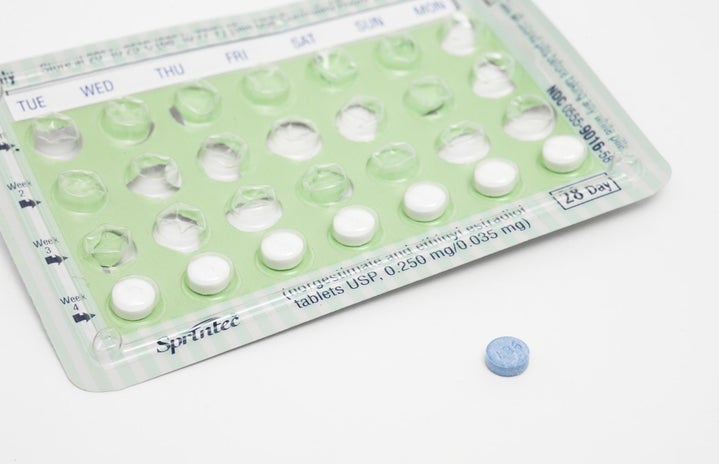#next_pages_container { width: 5px; hight: 5px; position: absolute; top: -100px; left: -100px; z-index: 2147483647 !important; }
Tomorrow, December 1st, the world will come together to celebrate the successes made in the fight against HIV/AIDS since the virus’s discovery in 1981 and to reunite its efforts in continuing to work towards a cure. This year, the world celebrates its 25th World AIDS Day and maintains hope throughout this epidemic, as the scientific community works its way to being closer than ever to an eradicative cure. There is much to celebrate, much to remember and much to be hopeful for.
In light of the accomplishments the world has seen in the fight against HIV/AIDS, let us use this commemorative day as an opportunity to remember what we have learned about the virus, to renew our efforts in keeping ourselves and our loved ones safe from transmission and to do our part in halting and reversing the spread of this ghastly disease.
According to the 2012 UNAIDS report, “Globally, young women 15-24 years old are most vulnerable to HIV infection, with infection rates twice as high as among men of the same age, and accounting for 22% of all people acquiring HIV infections”. Why is this? Why is it that a virus that is said not to discriminate and to be a risk to everyone regardless of race, ethnic background, culture, religion, gender or sexual orientation, is affecting young females disproportionately more than all other sub-groups? More importantly, what can we do about it?
While the challenges that women in the developing world (Sub-Saharan countries in particular) face vary greatly from those that we as university students face, there are still many factors that unite us and are causing our sub-population to be significantly more vulnerable to HIV transmission than the rest of the world. Anatomically speaking, women’s surface areas of transmission (which include the vagina and cervix) are much larger than men’s surface areas (foreskin, urethra and tears on the head of the penis), increasing the chance of a virus entering and remaining in the body. Young women’s genital tracks are also less mature and are often more prone to abrasions that can occur during sexual intercourse, which leave more room for the virus to enter the body’s blood stream directly.
Beyond biology, certain sociological factors also play an important factor in rendering young women more susceptible to HIV than men. Young women worldwide are extremely vulnerable to gender-based violence, often including sexual violence. Various studies have estimated that 11-45% of women worldwide report that their first sexual experience was forced. Findings also conclude that women who have experienced sexual violence in their past are more likely to contract HIV due to fear of negotiating condom use and questioning their partner’s status. Other factors, including economic restrictions and refusal of status disclosure due to fear of rejection and stigma also put women at a higher risk of getting infected and neglecting to get tested and receive treatment.
Thankfully, there are countless resources right here on campus that are available to us young, female students and can help us keep our bodies safe and healthy. These include the Women’s Resource Center, which offers free condoms and counseling, and the University of Ottawa’s Health Services, which offer free, rapid HIV testing on campus every Wednesday from September-November and January-March.
With all of this in mind, why not use this year’s World AIDS Day as an opportunity to learn more for yourself and to teach your loved ones and friends about the virus? Here are a few options on how you can join the movement on December 1st:
-Attend an event: From community walks to movie nights, activists worldwide are uniting on December 1st to raise awareness and show support in the fight against HIV/AIDS. To find an event near you, visit: http://www.worldaidsday.org/events/
-Host an event: If you can’t find an event that you’re interested in, why not host your own? Have some friends over, rent a relevant film (Philadelphia or Angels in America are two of many to pick from) and organize a group discussion about the movie and its key messages. Throw in a few snacks and drinks and you’ve got your-self a great night in. For printed hand-out materials that you can distribute to your guests at your event, visit: http://orders.catie.ca/index.php?language=en (resources/shipping are FREE)
-Get tested: Many students put-off getting tested due to fear of finding out they’re HIV positive or because they think they’ll never be the ones to get infected. For this year’s World AIDS Day, put your fears and pride on hold and get tested. Book an appointment at the Sexual Health Clinic on Clarence Street in the market to get a rapid HIV test between 8:30-12:30/1:30-4 on weekdays. By appointment only, call: 613-234-4641
-Raise awareness: It’s as simple as posting a Facebook status or Tweeting an important fact about HIV transmission. At a loss for words? Try this status:
“In the time it will take you to read this Facebook status, someone in the world will have been infected with HIV. Today marks the world’s 25th World AIDS Day. Do your part in helping halt and reverse the spread of this virus. Get tested. Get treated!”
Have an educational, informative and hopeful World AIDS Day everyone!
***Photocredits
http://www.cbmin.org/cbm/WorldAIDSDay
http://notenoughgood.com/2012/07/pharmacy-hiv-test/

